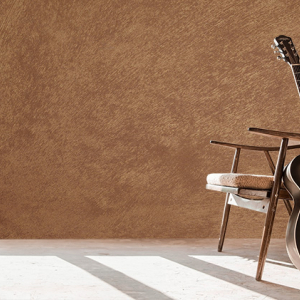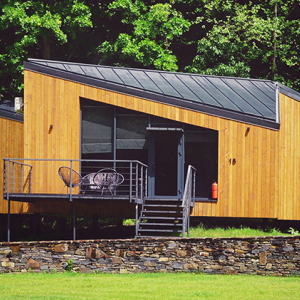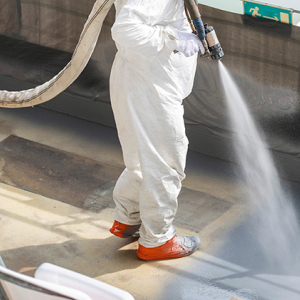
Protection of metal and wooden surfaces with waterborne topcoats
Metal and wooden surfaces are painted not only for protection, but also for aesthetics. The wood is protected against moisture, UV rays, fungi or insects and therefore rot and wood decay are prevented. Even metal surfaces are protected against moisture which causes oxidation and rusting. Painted surfaces are easier to clean and maintain, which extends their lifespan.

Water or organic solvent?
Many coatings thinned with synthetic thinners (traditional alkyd enamels) are used to paint these surfaces, as are an increasing number of coatings thinned with water. Many people doubt the quality of water-based coatings for the protection of exterior wooden and metal surfaces, as it is water that is the most responsible for the deterioration of such materials. However, tests on both corrosion and all the other properties that deteriorate with exposure to moisture prove otherwise. Waterborne coatings offer very similar protection against moisture as solvent-based coatings. A comparison of some of the properties of waterborne and solvent-based enamels (Table 1) shows that both have their advantages and disadvantages.
Table 1: Comparison of some waterborne and solvent-based enamels
|
Property |
Solvent-based enamels |
Waterborne enamels |
|
Solvent |
Organic solvents less friendly to health and the environment |
Water |
|
Smell |
Strong, intrusive |
Slight, unobtrustive |
|
Working conditions and storage |
No special limitations |
Requires more care in tool selection and weather conditions (T > 8 °C), must not freeze |
|
Drying |
24 hours (long oil alkyds) |
6 hours – possibility of two layers in one day |
|
Pot life |
Long, allowing defects to be corrected without leaving a mark on the coating |
Shorter, so precise, error-free work is required |
|
Yellowing |
Yellows in the dark |
Does not yellow |
|
Levelling, gloss |
Very good appearance, gloss levels of 90 GU and above can be achieved |
Worse appearance, which can be fixed with suitable additives; gloss up to 70 GU |
|
Cleaning tools |
With appropriate thinner |
With water |
|
Shelf life |
Comparable to waterborne enamel within a similar quality class |
Comparable to solvent-based enamel within a similar quality class |
|
Quality of protection |
Comparable taking into account system protection (baseline) |
Comparable taking into account system protection (baseline) |
Manufacturers of topcoats for wood and various types of metal offer a range of different products, differing in terms of purpose, drying time, resistance to high temperatures, final appearance of the coating, ease of application, etc. Of course, one of the most important criteria for interior painting is exposure to harmful substances, so a waterborne opaque coating is a healthier choice.
Quality protection of wooden and metal surfaces with PU acrylic topcoats
Recently, waterborne enamels based on a technology that combines high-quality acrylic binders with polyurethane water binders or polyurethane alkyd emulsions have become available to users. In addition to the already mentioned advantages of waterborne coatings, this technology allows for application properties and a final appearance comparable to alkyd enamels. This year we have added TESSAROL Acrylic Enamel PU to the HELIOS TESSAROL range, which represents the highest quality class of water-based enamels. It is suitable for high quality protection of wooden and metal surfaces such as windows, doors, wood panelling, fences, simple structures, simple indoor and outdoor furniture.
It has a number of advantages As it is waterborne, the drying time is shorter. The coating is dry and ready for the next application after about 6 hours, allowing two coats to be applied in one day, so the space can be used more quickly after painting. Due to its very low content of volatile organic compounds, it has no unpleasant odour and is both user and environmentally friendly. The product complies with the SIST EN 71-3 2019+A1 2021 standard and is therefore also suitable for painting children's toys.
Application is simple (paintbrush, roller, air spray). Thinning is not necessary in principle, but if it is, it is thinned with water. Tools are also washed with water immediately after use. A sufficiently long pot life allows for nice levelling and an even satin finish. The rapid curing process produces a tough yet elastic film that resists early sticking and delamination. The coating is resistant to all common household cleaners and does not yellow over time, as is usually the case with alkyd-based solvent-based enamels.
Proper substrate preparation and the use of a suitable primer are essential for a quality finish with TESSAROL PU acrylic enamel. Wooden surfaces are painted with TESSAROL Acrylic Primer for Wood, while metal and hard plastic surfaces are painted with TESSAROL Acrylic Primer UNI. The interval between coatings is 4-6 hours. Remember to sand between coats with a sanding sponge or 180 grit sandpaper for better adhesion and easier finishing. 1 l of the primer covers 8 – 10 m2 of the surface, and 1 l of the enamel covers 10 – 12 m2 in one coat.



